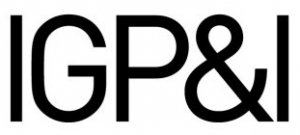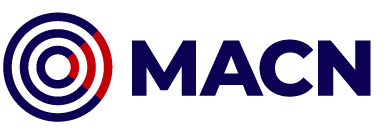Another Insight in our series of articles on safety and bridge resource management (BRM). We take a look at the team approach to situational awareness, based on role not rank, which has been implemented by Carnival Corporation.

How to make the most of all available resources on the bridge
Published 02 September 2015
Introduction
Traditionally, in challenging operations and difficult waters, the Master acts as the operator of the ship with responsibility for steering. All too often the rest of the bridge team remain passive when many incidents could probably have been avoided if officers had had the courage to be assertive and speak up and operation of the ship had been conducted more as a team than individual effort.
Team situation awareness is a major safety factor and can be achieved through clear roles and responsibilities creating a bridge team that is better able to maintain normal operations or to recover quickly from a difficult or abnormal situation without being overwhelmed or acting in a dysfunctional or harmful way.
Following a trial of role-based bridge organisation by Carnival Corporation in 2008, it subsequently implemented the system in all of its nine operating lines. Captain Hans Hederström,Managing Director at the Centre for Simulator Maritime Training, CSMART, a part of the Carnival Corporation, has written an article on this system. This Insight serves as a summary and a link to the full article can be found here.
Role-based bridge organisation
The concept has its roots in the aviation industry – see previous Gard Insights looking at lessons to be learned from the aviation safety culture. The maritime version uses the role of navigator, who has direct control of navigation using the Track Control System or giving orders to the helmsman and communicates intentions and orders to the co-navigator, who monitors, cross-checks and supports the navigator. This ensures a certain degree of overlap - no course changes or engine orders will be carried out without an agreement and confirmation from the co-navigator. In addition, there should be a minimum of two bridge officers on watch at all times when the ship is underway. Active monitoring of navigation systems and communication between the navigator and co-navigator while the administrator gets on with managing alarms and phone calls enables each role to focus on their respective tasks without being distracted or disturbed.
Clearly, cruise ships have more available bridge resources than other types of ship, e.g. a general cargo ship. Nevertheless, the model is transferrable to a bridge with less manning through not having the operations director and administrator roles. The Master in this case should take the role of co-navigator unless the officer who should assume the navigator role is very inexperienced or the operation is very high risk.
The philosophy behind this system is to encourage the Master to assume the role of operations director, to take a step back to get an overview of the operation, acting as a leader/manager while the team carries out the actual operation. The Master will evaluate the risks involved to safely carry out a particular operation to decide upon the manning level required on the bridge. The risk analysis is based on the following framework, taking into account the type of ship and/or trade involved:

Once the manning level has been decided, the Master then selects the roles for the bridge team and who to fill them.
The roles and related tasks

Key qualities required for the roles have been identified as the abilities to:
respond: knowing what to do/how to respond to expected and unexpected disruptions and interruptions
monitor: knowing what to look for – how to monitor a potential threat both in the actual environment and via systems
anticipate*:* knowing what to expect – how to anticipate developments, threats, and opportunities
learn: understanding why something happened – how to learn from experience, the right lessons from the right experience, building on successes as well as failures.
The navigator and co-navigator are responsible for responding, monitoring and anticipating, while learning from past experiences is taken care of via debriefings.
Learning from experience - organisational resilience
According to the system, debriefings should take place after each major operation, for example a port departure in order to learn and improve the system. Even when everything went according to plan the Master should ask the team why they were so successful and highlight the factors which contributed to the success, such as:
having a detailed plan for the operation
working from a shared mental model
being proactive and anticipating the next event
communicating about the situation
following the standard operating procedures
cross-checking all actions before executing
challenging any deviation from the plan
debriefing and learning after other operations
not taking past successes as a guarantee for future safety
discussing risk even when things looked safe.
Final comment
There are many different forms and methods of BRM - some work better than others in certain shipping sectors. The ultimate goal of BRM should be to use all available resources – human, technical and organisational – to manage risks to ensure operations are carried out efficiently, safely and resiliently. In other words, to maintain normal operations or to recover quickly when responding to a difficult situation or an incident. A role-based organisation on the bridge can certainly help to achieve this goal. The team uses technology in a structured manner, they work in a coordinated way, pooling knowledge and experience and the Master is able to coach, supervise or intervene.Further detail about the system can be found in the full version of Captain Hederström’s article.
Our thanks to Captain Hederström for permission to reproduce the image from his article as well as his valuable assistance in preparing this summary.
CSMART offers training in bridge resource management and other courses.
Please e-mail questions or comments about this article to the Gard Editorial Team.


